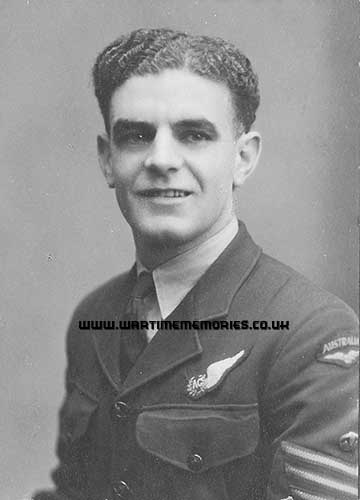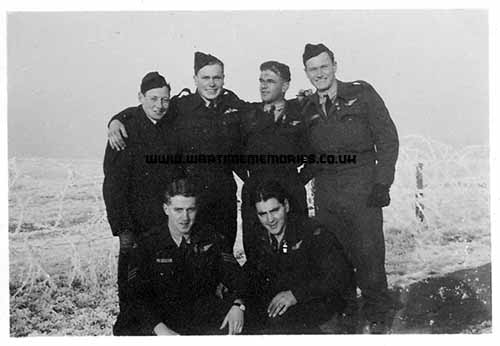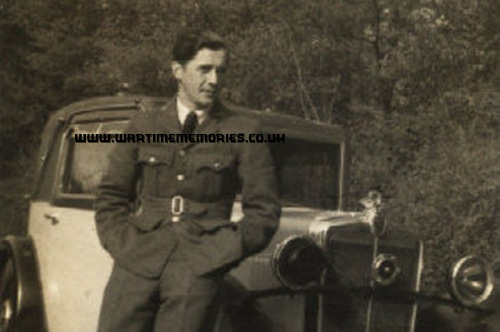|
|
|
RAF Padgate
If you can provide any additional information, please add it here.
|
Those known to have served at RAF Padgate during the Second World War 1939-1945. The names on this list have been submitted by relatives, friends, neighbours and others who wish to remember them, if you have any names to add or any recollections or photos of those listed,
please
Add a Name to this List
|
|
|
The Wartime Memories Project is the original WW1 and WW2 commemoration website.
Announcements

- 1st of September 2024 marks 25 years since the launch of the Wartime Memories Project. Thanks to everyone who has supported us over this time.
- The Wartime Memories Project has been running for 25 years. If you would like to support us, a donation, no matter how small, would be much appreciated, annually we need to raise enough funds to pay for our web hosting and admin or this site will vanish from the web.
- 19th Nov 2024 - Please note we currently have a huge backlog of submitted material, our volunteers are working through this as quickly as possible and all names, stories and photos will be added to the site. If you have already submitted a story to the site and your UID reference number is higher than
264989 your information is still in the queue, please do not resubmit, we are working through them as quickly as possible.
- Looking for help with Family History Research?
Please read our Family History FAQs
- The free to access section of The Wartime Memories Project website is run by volunteers and funded by donations from our visitors. If the information here has been helpful or you have enjoyed reaching the stories please conside making a donation, no matter how small, would be much appreciated, annually we need to raise enough funds to pay for our web hosting or this site will vanish from the web.
If you enjoy this site
please consider making a donation.
Want to find out more about your relative's service? Want to know what life was like during the War? Our
Library contains an ever growing number diary entries, personal letters and other documents, most transcribed into plain text. |
|
Wanted: Digital copies of Group photographs, Scrapbooks, Autograph books, photo albums, newspaper clippings, letters, postcards and ephemera relating to WW2. We would like to obtain digital copies of any documents or photographs relating to WW2 you may have at home. If you have any unwanted
photographs, documents or items from the First or Second World War, please do not destroy them.
The Wartime Memories Project will give them a good home and ensure that they are used for educational purposes. Please get in touch for the postal address, do not sent them to our PO Box as packages are not accepted.
World War 1 One ww1 wwII second 1939 1945 battalion
Did you know? We also have a section on The Great War. and a
Timecapsule to preserve stories from other conflicts for future generations.
|
|
Want to know more about RAF Padgate? There are:-1 items tagged RAF Padgate available in our Library There are:-1 items tagged RAF Padgate available in our Library 
These include information on officers, regimental histories, letters, diary entries, personal accounts and information about actions during the Second World War. |
|
LAC Cecil Henry "Charlie" Smith 620 Squadron Leading Aircraftsman Cecil Henry Smith, known as Charlie enlisted in 1940 and trained at RAF Padgate. He served in various bomber squadrons as an engine fitter and from June 1943 served in 620 Squadron as an engine fitter, being part of the ground crew for Stirling marks I to IV, notably Stirling S for Sugar. He was demobbed in September 1945
|
LAC William Fenton My father, William Fenton was at RAF Predannack in Cornwall. He was an LAC and worked on Lancasters. He was also a great sportsman and played football. My father was also at RAF Padgate and RAF Blackpool. I have many photos of him and his team and also taken with his CO. Does anyone remember him?
|
W/O. Raymond Michael McDermott 100 Squadron My grandfather, Mick McDermott, served as a wireless operator air gunner in a Lancaster crew. The other members of the crew included:
- Gordon Kerr: Bomb Aimer
- "Butch" Craven: Tail Gunner
- Peter Wyga: Pilot
- Ralph Robertson: Navigator
- "Ni**er" Crane: Mid Upper Gunner
He arrived in the UK from Sydney in January 1944 and went initially to RAF Station Whitley Bay, then Padgate and Hoylake. Between July 1944 and March 1945 he was in 8 AFU, 29 OTU and 26 OTU. On 9 March 1945 he was at 71 Base, on 16th March 72 Base, 31 March RAF Bottesford and 11th May (ie after VE Day) 100 Squadron. On 26 June 1945 he went to 9 ACHU, then 11 PDRC and home to Australia in Nov 1945.
|
P/O. Clifford Dennis Hunt 607 Squadron (d.5th June 1942) Clifford Hunt was posted to Padgate Air Crew as a Pilot Under training, on the 12th of September 1939. On the 3rd of November 1939 he was posted to Wick, then on the 28th of December 1939 to 4 I.T.W., Hastings
by the end of the year his rank was A.C.2, Pilot U/T.
Clifford joined No.13 O.T.U. (Bomber Command)on the 20th of May 1940 and on the 10th of June was
posted to 50 Group (pool) then to 8 S.F.T.S. at RAF Montrose on the 10th of August 1940. He qualified as a pilot on the 26th of October 1940 and was posted to 56 O.T.U. (Fighter Command) on the 4th of November, transferring to
22 Squadron at North Coates, Lincolnshire on the 9th of December 1940, then to
607 Squadron at RAF Usworth, Durham on the 16th. On New Years eve 1940 he was promoted to
the Rank of Sgt. Pilot. His service record notes he held this rank when at
Skitten, Caithness with No. 607 Squadron on the 26th of May 1941. On the 26th of June 1941 he was
posted to No. 3 Squadron for Flying Duties at Stapleford Tawney in Essex, On the 18th of July 1941 he was granted a commission as Pilot Officer for duration of hostilities.
He joined No. 174 Squadron for Flying Duties at Manston in Kent, on the 10th of March 1942, this is confirmed in Cliff's diary entry for 10/3/1942, with the note that it was a Fighter Bomber Squadron. On the 8th of May 1942 he was promoted to Flight Commander (Flight Lieutenant) and on the 5th of June 1942 Clifford was killed on Active Service.
|
AC2. Leo Bernard Lamb Armorour 73 Squadron My father, Leo Bernard Lamb, signed up during WW2 to join the RAF.
He was posted to RAF Padgate on 25th of July 1940.
On the 17th of August 1940 he was sent to join 73 Squadron and was eventually transported to the Middle East or North Africa on 13th of November 1940 on HMS Manchester.
Whilst on route HMS Manchester was redirected to attack the Italian Fleet at Cape Spartivento, the battle taking place on 27th of November 1940.
|
LAC. Robert Etchells My father Robert Etchells enlisted in the RAF in July 1940 at RAF Padgate. He started as an AC2, then AC1 and then a LAC. I believe he became a motorcycle dispatch rider for the RAF.
Unfortunately, he had to be discharged in August 1942 following some sort of accident where he lost his right leg below the knee. Does anyone remember him or do they remember anything about his accident?
|
Flt.Sgt. Joseph Thomas "Jock" Barclay 466 Squadron 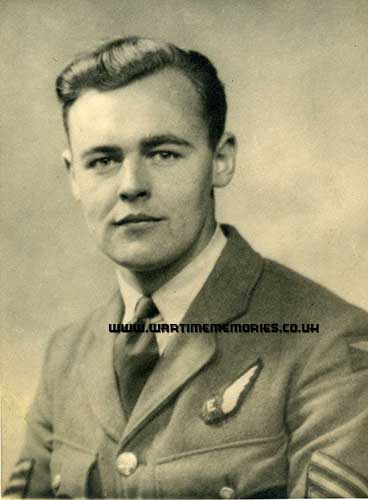  On reaching my eighteenth birthday I had to register for National Service and as my father had served in the Navy during World War One and my younger brother, Danny, was already at sea in the Merchant Navy, I looked forward to serving in the Navy also. However, I was very dismayed to find I had been placed on the Reserved Occupation Register and was destined to work on munitions for the duration of the war. Later I heard that if I volunteered for aircrew duty in the Royal Air Force I could get away to war if I passed the examinations and so with some other apprentices we volunteered and I'm glad to say I passed for pilot training. However, the selection board suggested that, as I was engineering trained, there was a new aircrew trade which took half as long as pilot training so I opted for that.
At that time there was an outbreak of typhoid in Scotland so I was put on deferred service. I then left the Home Guard and joined the Air Training Corp whilst waiting to be called up. Meanwhile, I attended the ATC in the building that was later Bellevue Secondary School where I got some Navigation, Morse training etc.
In the interim period I was sent to the old Waverley Market and employed in modifying the famous jeeps, working ten hour shift on constant nights when after six weeks I was told to report to Padgate Induction Centre and from Padgate to Blackpool South Shore for basic training which included drill, sports, square bashing, rifle range then to the school at Squires Gate training school for the Flight Mechanics course which lasted approximately three months before being posted back to Squires Gate again for the Fitters to Engines course, again for approximately three months with periods of Sentry Duty etc then from there onto RAF St. Athan, Glamorgan in Wales whilst waiting to join the Flight Air School. I was then aged twenty.
Whilst waiting we were drilled for one week in order to attend the Military Funeral of two Canadian Airmen who had crashed on the Welsh mountains and were laid to rest in St Athan.
Once we completed our training at St Athan we were lined up and told that if anyone didn't want to go on to train for the Flight Engineers course, which meant, of course, that you would be in the front line conflict, you could choose instead to stay on and train as an Engine Fitter which meant that you would be working as Ground Crew.
Along with most others I decided to go ahead with the Flight Engineers Course since I was really keen to fly. We had been made aware of the potential danger of flying but most of the men stayed in line like myself. It was then that my Mother realized what a dangerous job it was and made me a wee kiltie doll as a lucky charm which I kept in the pocket of my uniform every time that we flew. However, some one stole it.
I went sick with impetigo so lost the crew I'd had been training with. When I recovered I was posted to a conversion unit at Marsden Moor where there were airmen who were already trained and that is where I met Andrew Currie from Glencorse in Midlothian.
We had to find our own air crew to fly with and when Andrew & I were at the Mess waiting for dinner to be served we spotted two Australian crew so asked them if they looking for Flight Engineers which they were and that is how I became part of 466 Squadron (RAAF) together with Fred Pope (Pilot), John Downs (Navigator), Charlie Wilson (Bomb Aimer), Tom Roe (Wireless Operator), Nick Hewitt (Rear Gunner), Ed Dalton (Mid Upper Gunner) an all Australian Air Crew and myself!
And so began my Tour of Service which in the October and November of 1943 began with dual circuits, three engine flying and two engine flying practice, Solo Fighter Affiliation etc and by early December we were Bombing and Firing quickly followed by a bomb load to X country.
By early January 1944 we were involved in Air to Sea firing and by mid February Ops to Berlin.
By the end of March we had flown to Stuttgart, Fighter Affiliation 2 Spitfires, Keil Harbour Mining, Berlin Bombing, Essen Bombing, Nuremburg Bombing.
By this time my friend, Andrew Currie, together with all his crew, had been shot down and killed. They had only been flying for about three weeks or so.
April 1944
- Ottignes Bombing 11,000lb H.E. three motor landing
- Dusseldorf Bombing holed by flak
- Villeneuve St Georges Bombing
- Aulnoye, France Bombing
- Acheres Bombing.
May 1944:
- Marlenes, Belgium Bombing
- Mantes, Gassicourt Bombing
- Mosalines, France Bombing
- Mosalines, France Bombed Coastal Defence Installations.
- Hasselt, Belgium Bombed Marshall Yards. Fighter Attacks
- Boulogne Marshall Yards.
- Practice Bombing: DCO
And so it continued..
- Colline Baumont Gun Battery
- Ops. Bourg Leopold Army Barracks.
June 1944
- OAmiens Railway Junction
- Evercy Troop Concentration
- Sterkrade ( Ruhr ) Bombed on 3 engines
- St.Martin L'Hortier Siracourt heavy flak
- Oismont/Neuville-Au-Bois, France
- Le Grand, Rossignol, France
- D.N.C.O Port Inner feathered
.
July 1944
- Oismont - Neuville Bois (P. Plane Base)
- Marquise Mimoyecques
- Les Landes Vielles St Neuves:
- Sannerville ( Second Front)
- Ardouval France.
August 1944
- The Chapelle Notre Dame but unable to bomb, landed at Marsden. Marsden Moor to Base:
- L'Isle Adam near Paris and Foret De Nieppe, near Lille.
By then we had completed the expected length of a Tour and survived, unlike many of our Compatriots.
We were then asked to continue on and fly as a Transport Plane. In this capacity and for the next fourteen months until my discharge on the 1st October 1946 I flew to - Algiers,
- the Azores,
- Morroco,
- USA (New York, Washington, Dallas, Nashville, San Diego),
- Canada (Nova Scotia, Montreal), Newfoundland (Gander),
- Egypt (Cairo & Rabat),
- Labrador (Goose Bay),
- Iceland (Reykjavick),
- Mid Pacific (Canton),
- Fiji Island,
- Australia (Sydney),
- New Zealand (Auckland)
- Scotland (Prestwick).
I saw the world which I would not otherwise have seen. From there back to Civvie Street to complete my Engineering Apprenticeship with the New Welding and Engineering Company based in Annandale Street, Edinburgh where I remained all my working life rising through the ranks, first to Foreman then to Works Manager until I retired in March 1988 aged 65 years of age. I am writing this now aged 91. Joseph Barclay.
|
F/Lt. Norman Carter "Mack" Macqueen DFC. 249 Squadron (d.4th May 1942) 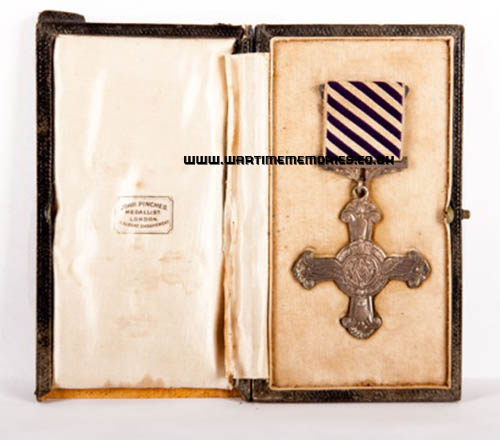 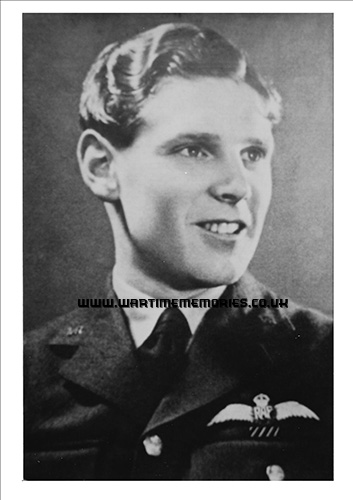 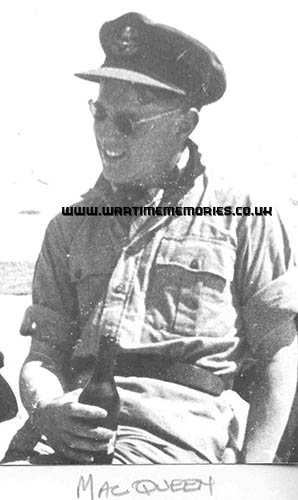 On 10th of September 1939, Norman Macqueen was at No 3 Depot at Padgate, near Warrington in Cheshire where he joined the service as an Aircraftman 2nd Class with other recruits. This was the commencement of his training programme which later that year took him to the north of Scotland at RAF Wick. His final posting was to Malta as a member of the famous 249 Squadron.
In December 1939, Norman joined the RAF Training Wing at Hastings and his first promotion came on 1st of January 1940 to Leading Aircraftman. By May 1940 he was at RAF Castle Bromwich (now Birmingham International Airport) and during October 1940 he was promoted to Sergeant as part of a transition to his Commission.
Norman was confirmed in appointment and promoted to the rank of Flying Officer with effect from 19th of October 19th 1940 but with seniority back-dated to 12th of October 1940. However, on 12th of November 1940, Norman was granted a Commission as a Pilot Officer in the GD Branch, Royal Air Force Volunteer Reserve for the duration of hostilities. As an officer, Norman was posted to 610 Squadron for two weeks before a further posting to 602 Squadron on 16th of December 1940. He was granted the paid Acting Rank of Flight Lieutenant on 16th of October 1941 and on 31st of January 1942 it was confirmed that Norman was to retain the rank of Acting Paid Flight Lieutenant and this coincided with his service at RAF Redhill in Surrey. It was during this period that Norman was selected for service overseas. His service record confirms his appointment to HQ Mediterranean as 9th of February 1942 and then to 249 Squadron on 8th of March 1942. At this time, 249 Squadron had been sent to Malta. The unit was based at RAF Ta Kali and it was to play a major role in the defence of the island against the German and Italian forces.
In February 1942 Squadron Leader Stan Turner arrived to take over 249 and he brought a lot of valuable experience of flying tactics with him. The first contingent of 15 Spitfires (Mk Vs) flew into Malta from the aircraft carrier HMS Eagle (Operation Spotter). Norman Macqueen was part of this operation. More Spitfires were to follow later to augment the number of aircraft, later combined military efforts from Malta were to wreak havoc on enemy shipping and vital supplies to German and Italian forces in North Africa, thus German advances in this theatre of war were frustrated thanks to Malta.
It was soon clear that his combat experience over the Channel was to pay dividends over the skies of Malta as a mainstay of the Squadron, he was a popular and well liked member of the team. He was certainly one of the most successful pilots in the early weeks of Spitfire operations on the island.
His first victory in Malta came on 14th of March 1942 with a Bf 109 destroyed over the island of Gozo. Later, during the month two more Messerschmitts followed to add to the score. In April, he destroyed three Ju 88s and shared a claim in the destruction of a Bf 109. On May 1st he was to claim another share in the destruction of another Bf 109, this victory was to take his tally to seven and two shared destroyed and four planes damaged. However, he was bounced by some Bf 109s from lll/JG53. One Bf 109 managed to dive through the Spitfires and pull up and fired a quick snap shot in the underside of Macqueen's Spitfire (BR226). It was reported that he faltered and in the event he continued to fly his aircraft almost all the way back to Ta Kali before nose diving into the ground just short of the runway. Radio contact had been lost with Mac and it was believed that the tracer fire in the attack had wounded him and as a result he had lost consciousness on the way back to Ta Kali.
The London Gazette dated 1st of May 1942 carried the announcement of the award of a DFC to Flt Lt Macqueen. His parents would have received a telegram from the War Office advising them of his death.
This officer carried out a large number of sorties over enemy-occupied territory and destroyed 1 enemy aircraft whilst based in this country. In the Middle East he has destroyed a further 4 hostile aircraft. Throughout his operational career, Flight Lieutenant Macqueen has rendered most valuable service. He has displayed great skill and leadership.
Norman Carter Macqueen was laid to rest in the Kalkara Cemetery which belonged to the Admiralty and he shares the grave with other RAF personnel. The cemetery contains many graves from the 1914-1918 War as well as a number of Commonwealth graves. There are a number of sections in the cemetery. Malta is only a comparatively small island and land space is a valuable commodity. Kalkara Cemetery is near Rinella, a bay and hamlet opposite Valetta across the mouth of the Grand Harbour situated on a peninsula. The cemetery is maintained to a very high standard as a sombre memorial to those many people who made the supreme sacrifice in the prosecution of war. The name N.C. Macqueen DFC is inscribed on the memorial stone at the Garden of Remembrance in Rhyl along with many other names of the fallen. After his death of his father in 1979, the ashes of Joseph Gordon Macqueen were scattered near the stone in the Garden of Remembrance. Normans father outlived his wife and three sons and this final act was the best that could be done to unite a dear father and a beloved son.
|
F/Sgt. Patrick Charles James Eustace "Jock" Carragher My father Patrick Carragher was stationed at Padgate from 1938, and was in charge of the Physical Training wing at RAF Padgate.
He used to run amateur boxing matches on the camp. One night he had Jack London, Tommy Farr, and Peter Kayne as guests.
|
Sygmund Badel Sygmund Badel was based at RAF Padgate in Lancashire with the RAF, and was befriended by my family.
|
LAC. Albert Charles Stanley Mason Albert Mason served as an RAF Wireless Mechanic. I have just found (thanks to my brother Peter's determination) our father's service record. One of the entries in the Unit column is RAF Padgate 11/10/43.
|
Sgt. Robert Pinkerton No. 99 Squadron (d.21st Oct 1941) Robert Pinkerton was the elder son of Robert and Agnes Pinkerton. His father was a solicitor having offices both in Edinburgh and Perth. Robert attended Sedburgh School with his younger brother. After entering wartime service at RAF Padgate, he was mustered as an air gunner and posted to No. 99 Squadron, which was based at RAF Waterbeach in Cambridgeshire. There, he was assigned to a Wellington bomber, which went missing whilst on a bombing mission over Antwerp. The aircraft and the crew (all sergeants) were never found. His younger brother Alexander Carrick Pinkerton died during the same week on war operations. He was a second lieutenant in the Durham Light Infantry.
|
Recomended Reading.Available at discounted prices.
|
|
|





